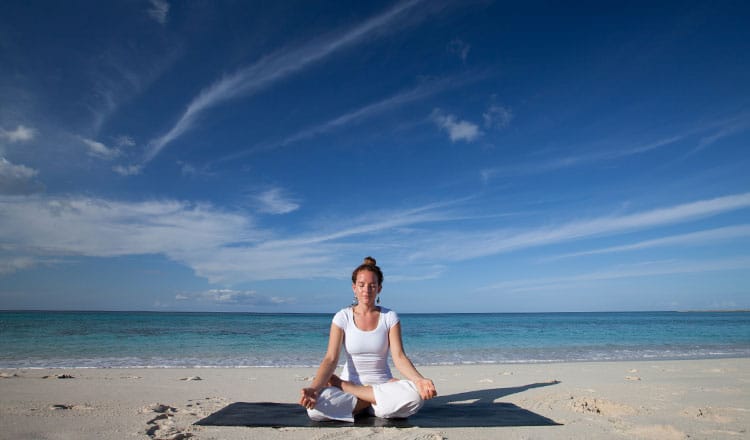Sivananda Bahamas Blog
Expand Your Horizons …
Our Blog
Proper Sitting Techniques for Yogis & Office Workers
Sitting looks easy, but it's not. With so many people at work or school being required to sit for great lengths of time — not to mention practicing yogis who sit for meditation — no wonder so many of us struggle with what should be a simple task.
Angelo Castello, DC, a practicing chiropractor who recently led The Spine and Beyond: Awakening Genius for Yoga Instructors course at the ashram, says it's important to understand what proper alignment is and to not put undue stresses and strains on the spine. He offers a number of proper sitting techniques to greatly enhance ease and comfort.
Muscle Pains and Strains
Ashram: When it comes to aches and pains, many people's first instinct is to reach for pills; do you have any suggestions on how people can manage common complaints such as muscle pains?
Dr. Castello: For strains or pains, sports overuse or something done in a strenuous way, moist heat is extremely therapeutic. I recommend that people use a wet towel with a microwave: put a wrung-out wet towel into the microwave for about 3 minutes, to create a nice steamy heat which you lay over the affected area for 15 consecutive minutes. As the heat dissipates within about 5 minutes, put the towel back in the microwave and out a couple of times and that should loosen the tissue up.
(Please be careful not to burn yourself when using this technique.)
Most of us sit in chairs every day; instead of slumping back, spine against the chair, Dr. Castello recommends you "slide forward with your feet flat to the ground at a 90-degree angle with your knees, making sure that your ear, shoulder, and hip are in line with one another."
"This way," he says, "if someone looked at you from the side and drew a line from your ear to your shoulder and down to your hip, they would make a straight line, not a jagged one.”
Another piece of advice from Dr. Castello for anyone sitting for long periods is to get up periodically and not sit for more than 20 to 30 minutes. This doesn’t mean a trip to the fridge every half hour, but rather just the action of standing up, perhaps getting a glass of water, and then returning to what you were doing.
Sitting on the floor has its own challenges, as any visitor to the asrham's two-hour meditation and chanting sessions can attest. With two, two-hour satsangs a day, that equals about four hours spent sitting cross-legged — and during meditation, trying to be as still as a mountain. Not easy!
Dr. Castello explains that “our ligaments, tendons, and muscles have been shortened and tightened over a lifetime. Therefore it takes a considerable amount of repetitive movements and being in these new positions over some time to start freeing these tissues up and creating more elasticity and flexibility.”
The majority of people sitting on the ground need more height so they can rock their lumbosacral spine back and forth, he says. "If you can’t rock the pelvis backwards and forwards, it’s usually because you’re too low to the ground. With a little more height, it takes enormous amounts of pressure off your lower back." The same principle of alignment as sitting in a chair applies here: the ear, shoulder, and hip should be in a straight line.
Dr. Castello suggests “two cushions to prop yourself up, maybe even three for someone who’s exceptionally tight, to start developing that elasticity and over time, removing one when more flexibility is gained in the hip area.”
Whether we’re in the office, a classroom, or on our cushions, it helps to think of sitting as a yoga posture; then as the Yoga Sutras teach, we are ultimately looking for sukha, or ease.








